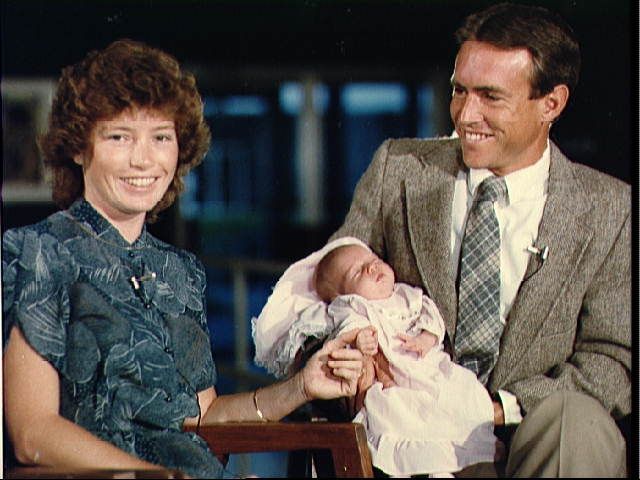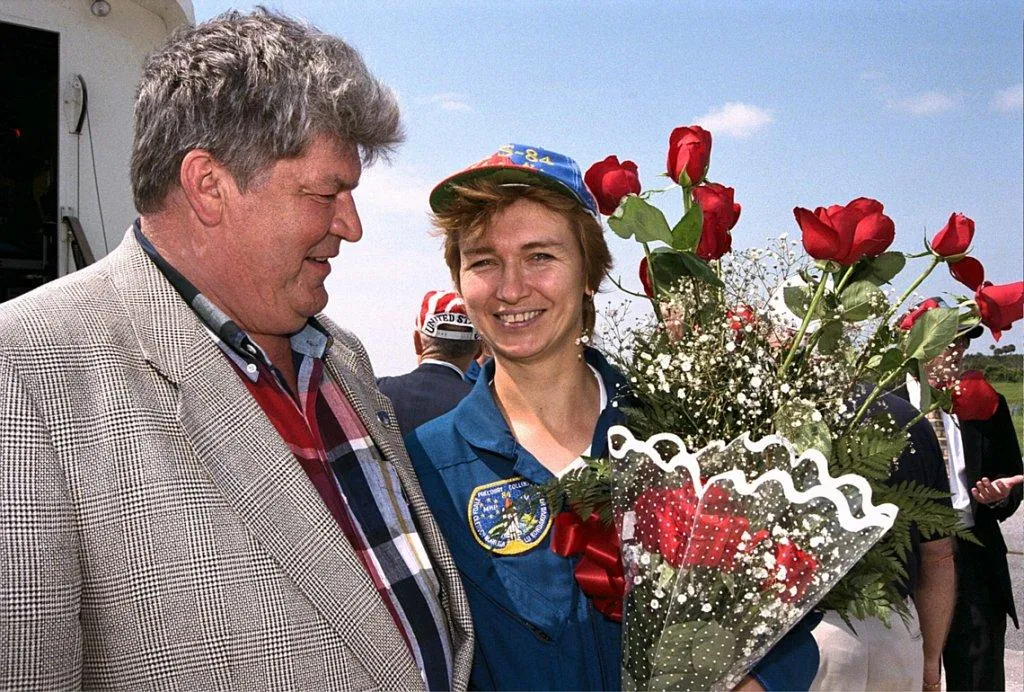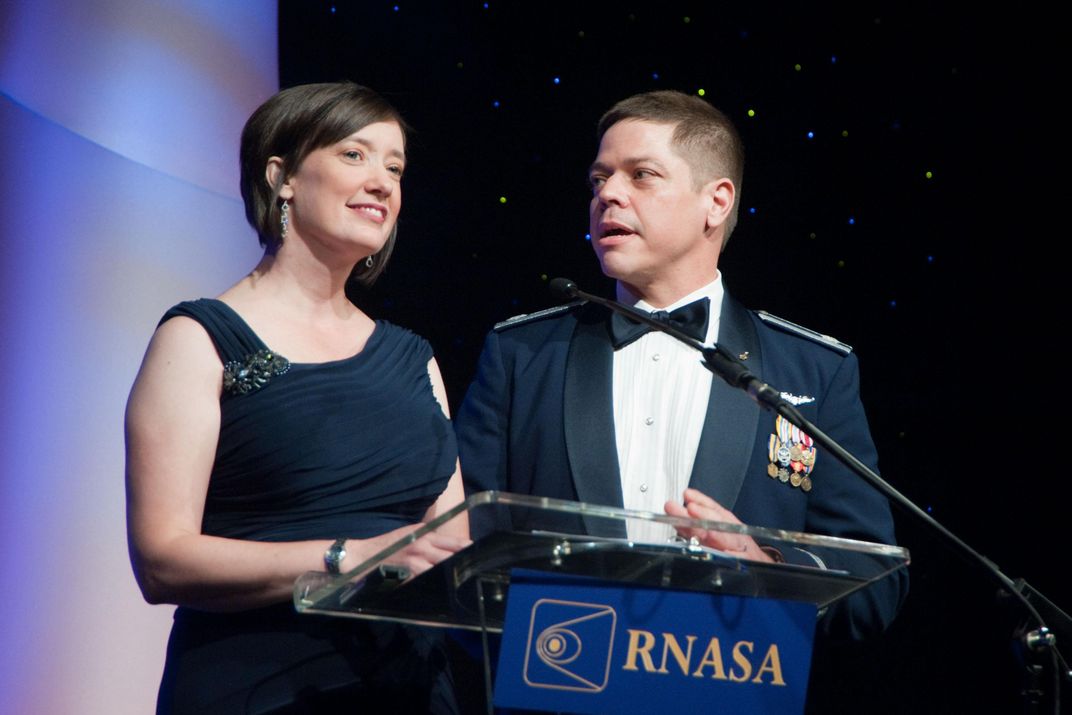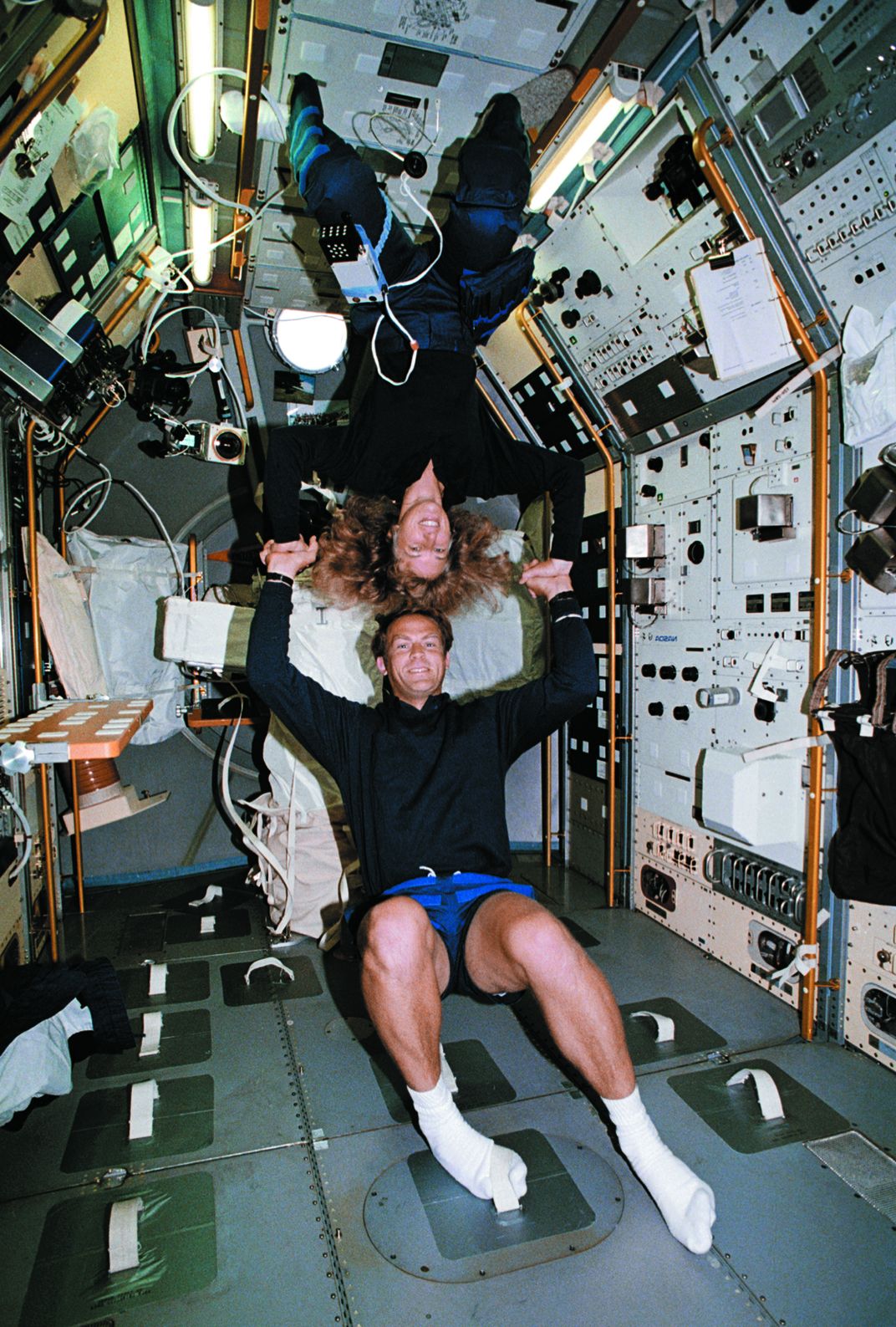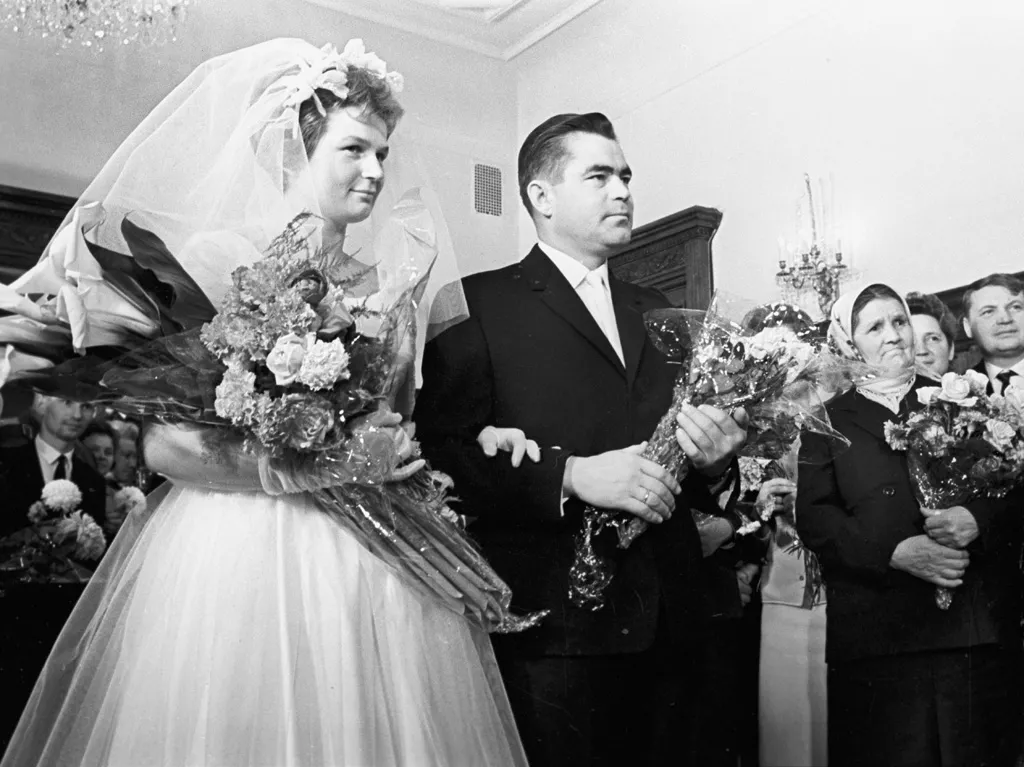The Astro-Couple
In the rarest of jobs, it’s even more rare for your spouse to be an astronaut, too.
/https://tf-cmsv2-smithsonianmag-media.s3.amazonaws.com/filer/7a/b9/7ab937b8-85ca-4d93-ac5f-50923ff8d6ef/nyberg_hurley.jpg)
The story of John and Annie Glenn is a touching one—“I don’t remember the first time I told Annie I loved her, or the first time she told me. It was just something we both knew.” John waited in the capsule of Friendship 7 for “the call”—a ritual that he and Annie had begun when he was a Marine pilot in World War II: “I’m going down to the corner store to buy some chewing gum,” John said. “Don’t take too long,” said Annie. It was their code—he’s about to do something dangerous; her response—be careful and come back.
In those early days of space exploration, that’s about all astronaut wives could do. Since then, there have been more than a dozen astronaut couples who’ve both experienced spaceflight firsthand.
NASA’s first class of space shuttle astronauts—the first to include women—had three such couples: Rhea Seddon and Hoot Gibson, Bill and Anna Fisher, and Steve Hawley and Sally Ride.
Seddon, who was a physician before joining NASA, met former Navy combat pilot Gibson while he was teaching her to fly a T-38: “That’s when the affection really set in.” He now jokes that she is “the only person who will talk about airplanes with him all the time.” Gibson says that anyone who marries an astronaut has to expect that person to be married to the job in some ways. “There’s just a lot of emotional involvement.” It helps, then, that both he and Seddon knew just what to expect during their astronaut careers. Gibson flew on the space shuttle five times, Seddon three times, before both retired from NASA in the 1990s.
The current astronaut corps includes two married couples—Bob Behnken and Megan McArthur, and Karen Nyberg and Doug Hurley. Nyberg, who was a mechanical engineer before joining NASA, flew on one shuttle flight and has done one tour on the space station, while Hurley, a former Marine test pilot, was on the last shuttle mission in 2011. They have a nine-year-old son named Jack. Like other astro-couples, they find that being in the same line of work makes some things easier. “Being both astronauts is helpful when the other is flying—no need to take the time to explain what is going on,” says Nyberg. “The down side,” adds Hurley, “is that you know the risks more than the typical spouse may be aware of.”
The first time Doug flew on the shuttle they weren’t married, but when Jack came along, it changed everything. “It was lot more stressful being at home than being on the mission,” Nyberg says. “Time went fast on the mission, but not so much at home.”
For Jack’s sake, they don’t fly together in NASA’s T-38s. And even if the opportunity came up to fly together in space, they wouldn’t do it. To unplug from their intensive work life and recharge the batteries, the family has land out in the hill country of Texas that they visit a few times a year—just the three of them plus their dog, for a week or so, to regroup as a family. In addition they make time to visit their respective families in Minnesota and New York.
Asked whether they hope Jack will follow in their footsteps, Hurley answers, “Whatever he wants to do, he should follow his passion. He shows an interest in dinosaurs, and just recently he’s shown an interest in planes—he requested an aircraft carrier toy.” But, says Nyberg, “Jack is largely unimpressed with what we do.” Their parting advice to any other would-be astronaut couples: “It is not any different than any other job where two working parents have to juggle all the balls and raise a productive member of society—except occasionally, we get to ride the rocket!”
